Reducing CO2 Emissions Across the OIST Campus
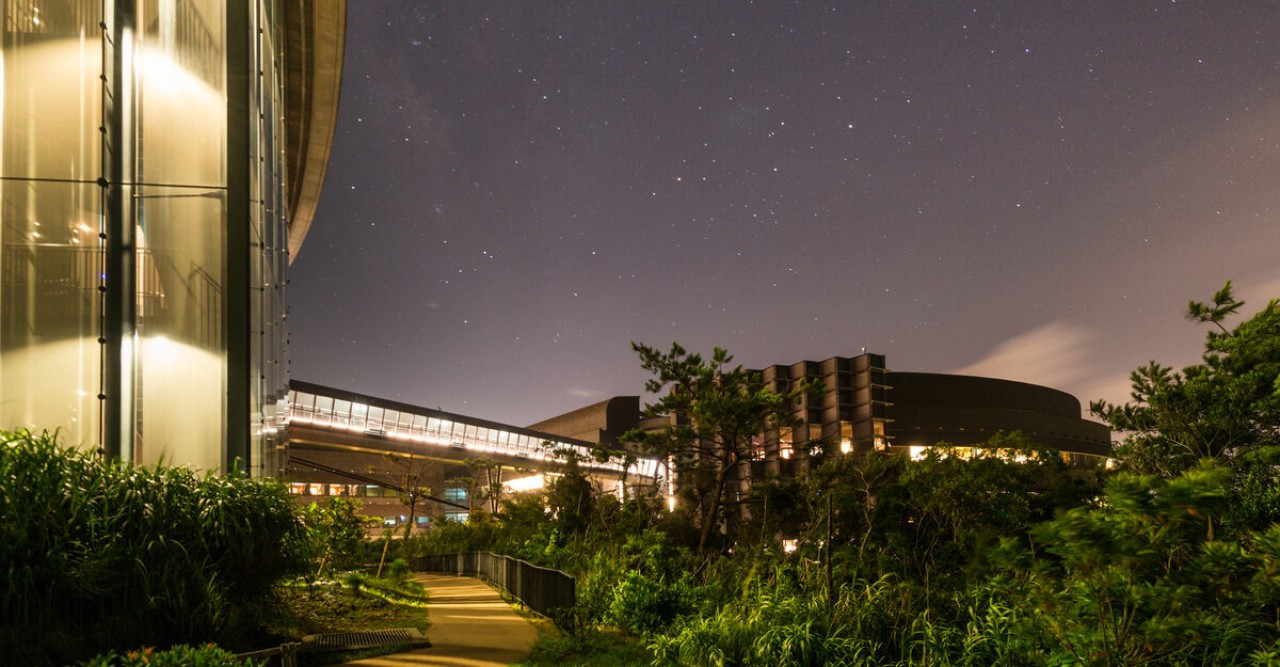
The OIST campus is a unique piece of architecture. Set on 500 acres of subtropical paradise, the university has been designed from the start to provide the best possible conditions to catalyze outstanding research and education while minimizing the impact on the natural environment. The Buildings & Facilities Management division at OIST are continuously working hard to reduce CO2 emissions across the OIST campus.
OIST has several initiatives in place to reduce electricity consumption inside its buildings. By using a Cogeneration System and Energy Service Provider, OIST has reduced its CO2 emissions by 130 tonnes per year. To reduce electricity usage from lighting, OIST is turning off lights in common areas from 6pm to 6am. On top of this, OIST is running air-conditioning units in certain offices and common areas for reduced hours each day.
To reduce carbon emissions associated with transportation, OIST is expanding its shuttle bus service, which runs between OIST and nearby towns. This will encourage more OIST members to use public transport rather than private vehicles when traveling to campus.
Many of OIST’s architectural features have been specially designed to reduce CO2. OIST has several long canopies which reduce the amount of sunlight directed at buildings, reducing heat load by 56%. The campus also has a highly efficient heat source system and ice storage system which reduces carbon emissions by approximately 2,500 tonnes each year. In addition, OIST has an innovative wastewater system that allows wastewater to be treated and reused, saving both energy and water. OIST’s lighting system uses LED lights to reduce energy by 26%.
Together, these innovative initiatives are helping to lower OIST’s CO2 emissions and reduce the university’s carbon footprint.
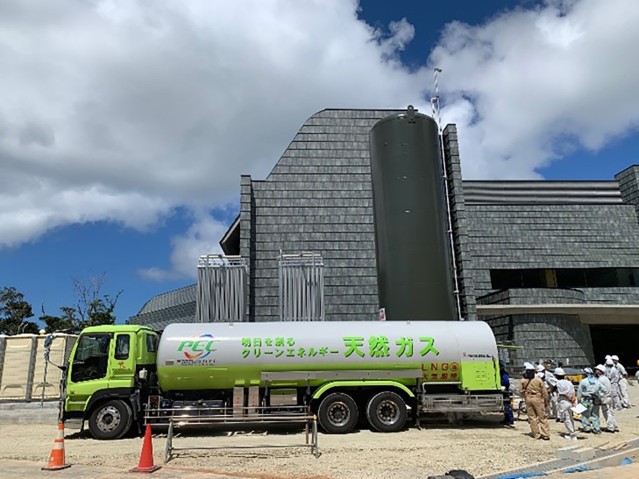

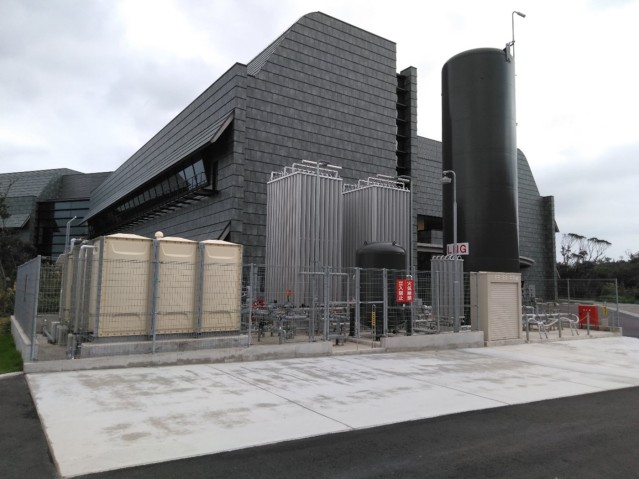
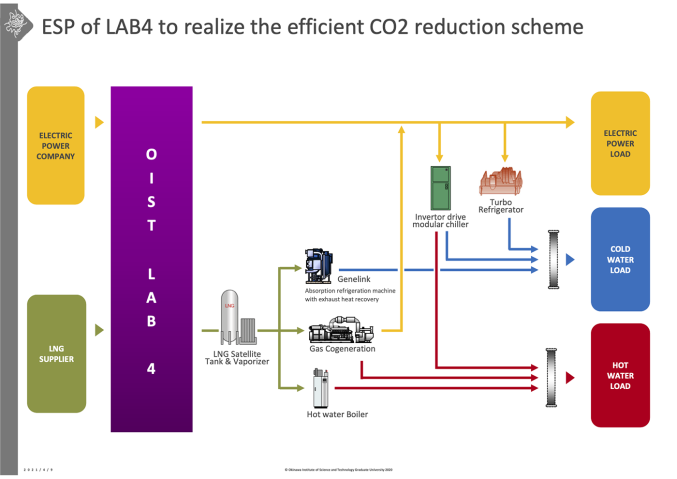
Campus Energy Reduction Initiative (CERI)
Beginning April 1, 2023, a new schedule for lighting, managing room temperatures and building ventilation will be put into place as part of the Campus Energy Reduction Initiative (CERI).
CERI is a concerted effort to reduce OIST’s carbon footprint. The first stage in the initiative includes adjusting lighting settings, and heating, ventilation, and air conditioning (HVAC) system settings in all buildings, to improve efficiency. The charts below describe new schedules for lighting and HVAC. Lighting and the HVAC system can still be controlled manually in each room, so please continue to turn lights off and reset the thermostat when leaving a room.
While improving the efficiency of energy use, maintaining a safe research and work environment for everyone on our premises remains a priority. Please be assured that these changes will not adversely impact the daily research or business activities carried out at OIST. By working together, these efforts can achieve substantial reductions in energy consumption and make a positive impact on the environment.
To provide feedback on these efforts and ideas for others, please use the CERI tag in the BFM Service Now page.
Guidelines for CO2 Emissions Reduction
1. Lighting Schedule Management
- BFM will set a baseline ON/OFF lighting schedule as described in the chart below. If a time is not listed, it means that the lights will not be automatically turned on. The lighting system will be turned “OFF” three times per day, as listed below, during late night and early morning hours. For example: If a light is automatically turned off at 20:00 and then someone turns it on again and forgets to turn it off, it will automatically turn off at 22:00. For 0:00 as well. This will minimize the number of times the lights are forgotten to be turned off.
- As a rule, all but the minimum required lighting will be left OFF.
- Please keep in mind that any unnecessary lighting should be turned off once you have finished using a space.
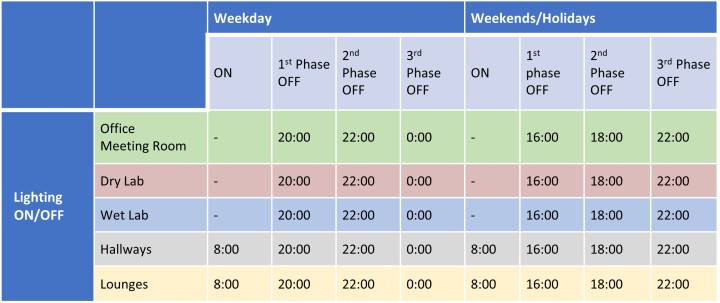
2. Room Temperature Management
- BFM will set the baseline room temperature as described in the chart below.
- A room’s temperature can still be adjusted manually using the thermostat.
- When adjusting the thermostat, please keep it within 1 degree (+/-) of the temperature listed in the chart below.
- This basic room temperature schedule will be reviewed based on your feedback.

3. Air-Conditioning ON/OFF Schedule
- BFM will set the air conditioning system ON/OFF schedule as follows.
- All but the minimum required air conditioning will be turned OFF and should be turned ON as needed.
- Please keep in mind that unnecessary air conditioning should be turned OFF.
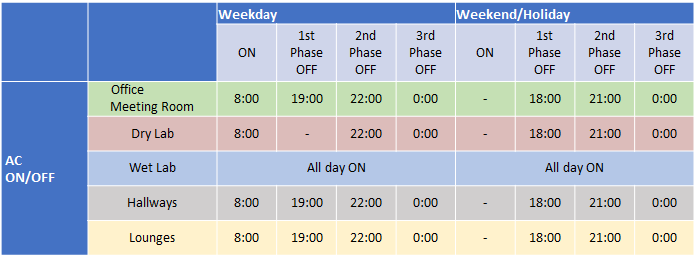
4. Room Ventilation Frequency Management
- BFM has the ability to remotely increase or decrease the outside air supply that enters a room by adjusting the HVAC system.
- Changes in ventilation frequency will affect the air balance in the building and will be made after careful consideration and setting changes. Please note that it may take some time to change these settings due to program changes, maintaining a balanced system.
- After the ventilation frequency change, the system balance will be reviewed periodically based on feedback.
- The following is a suggested ventilation schedule published by the Society of Heating, Air-Conditioning and Sanitary Engineers of Japan. BFM will use it as a baseline for creating the room ventilation schedule.
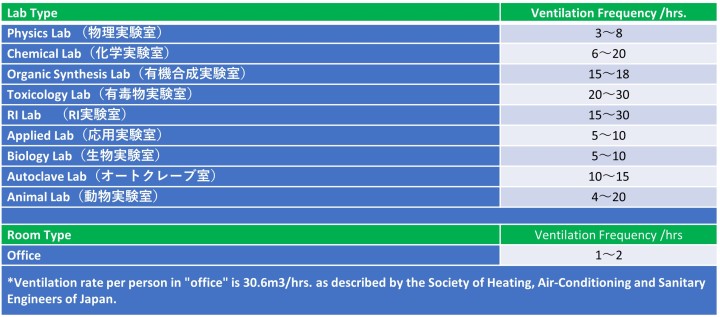
Project Collaborators
For saving energy: Okinawa Electric Power Company, Reliance Energy Okinawa
Take Action:






 CERI map (Center Bldg)
CERI map (Center Bldg)


